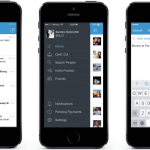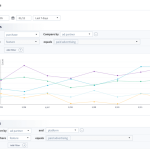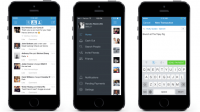segment provides more data sources besides apps and web sites to its hub
the corporate, which focuses on connecting information to analytics instruments, also adds out-of-the-field trade intelligence reviews from partners.
When it began in 2012, phase (previously section.io) had one purpose in life: take data from cell apps and internet sites, and make them simply and persistently available thru its hub to a handful of analytics instruments, like Mixpanel, Hubspot and Google Analytics.
it’s essential visualize it as a tree, CEO and co-founder Peter Reinhardt informed me. The trunk had a couple of roots — apps and web sites — they usually fed a handful of branches, the instruments.
as it advanced, segment brought branches — that is, instruments for such purposes as attribution and A/B trying out — except it supported more than a a hundred. one day, he recalled, instrument makers started calling section to set up integration, as a substitute of the opposite direction round, until greater than 200 tools were supported.
segment then delivered the flexibility to ship the info to a data warehouse, where it is usually analyzed by way of a business intelligence (BI) application. The BI software, Reinhardt mentioned, was once like some other analytics software, however there have been nonetheless only two roots — information from websites and apps — going to dozens of branches.
today, section is asserting a brand new product known as Sources, which, to continue Reinhardt’s metaphor, begins to extend the number of roots within the firm’s tree.
the new sources of knowledge, in addition to apps and sites, now embrace purchaser relationship administration (CRM) device Salesforce, assist desk Zendesk, cost platform Stripe, electronic mail advertising and marketing seller MailChimp, transactional e mail providers Sendgrid and Mandrill, purchaser comments platform Intercom, inbound marketer HubSpot and cloud communications platform Twilio. other sources can be brought ceaselessly, the corporate mentioned.
the data may also be imported with a single click with the aid of a non-technical consumer and may embrace such data as give a boost to tickets, funds or e-mail campaigns.
it may be sent to a Postgres database or an Amazon RedShift data warehouse service, where it can be queried and visualized in out-of-the-field reports by using instruments from business intelligence providers Chartio, Mode, Looker, Zendesk’s Bime or Periscope knowledge.
for example, a industry might higher take into account the relationship between an internet consumer enhance dialog and a purchase. Or it could examine knowledge to find out how much income is actually generated from each and every particular e mail campaign.
A business may itself build the data seize from the sources’ APIs, Reinhardt recounted, but it could contain coding to deal with the particulars of each and every API, in addition to translation, structuring and routing.
“We see ourselves because the pipes and reservoirs of the info,” he mentioned.
this allows more complicated comparisons, he mentioned, than the simple knowledge piping through an automated workflow that’s supplied by way of, say, workflow automation carrier Zapier.
if that’s the case, for instance, the information a few consumer indicating dissatisfaction through a Zendesk ticket would routinely be despatched to a consumer enhance channel on Slack.
Startup Usermind is trying to be Zapier plus trade intelligence bundle Domo, however Reinhardt mentioned that section makes it more uncomplicated and faster for a trade to set up knowledge capture and routing that compares any kind of information, whereas Usermind is targeted extra on strategies and workflows.
(Some pictures used underneath license from Shutterstock.com.)
advertising Land – web advertising news, methods & pointers
(26)















